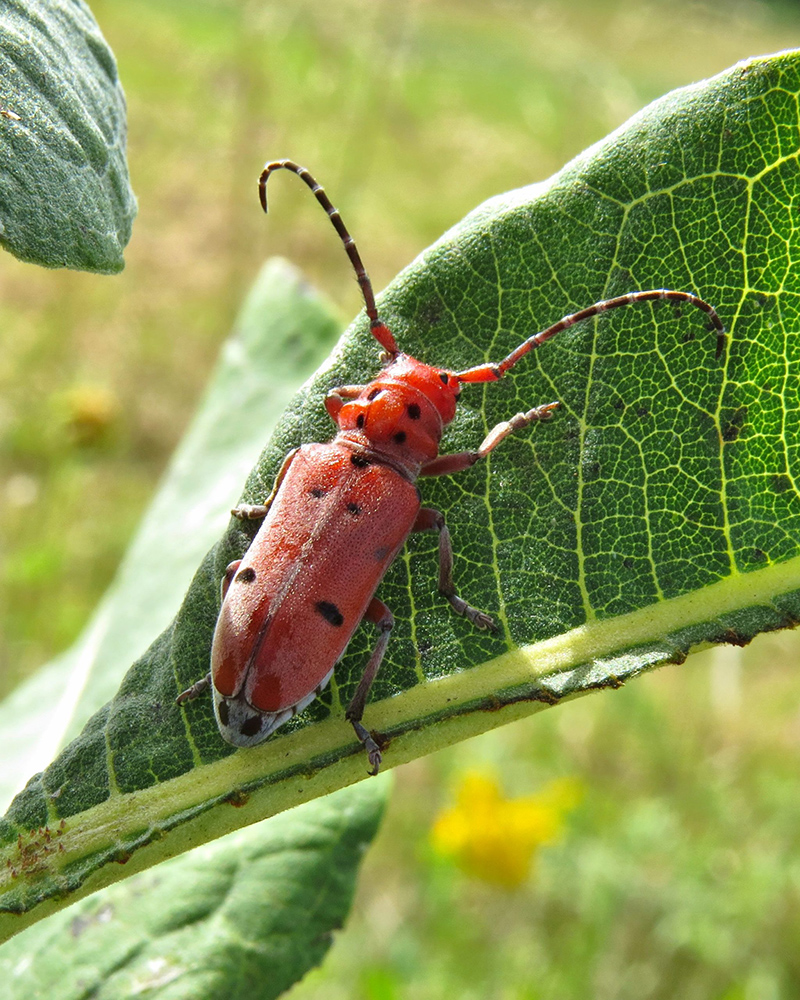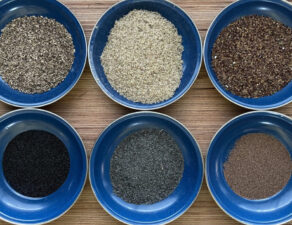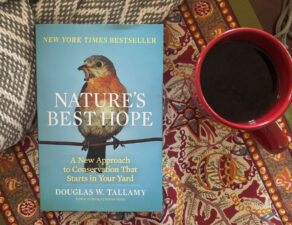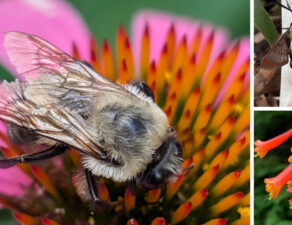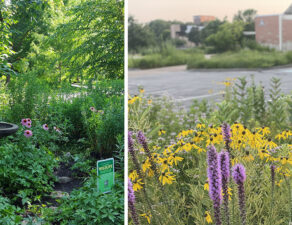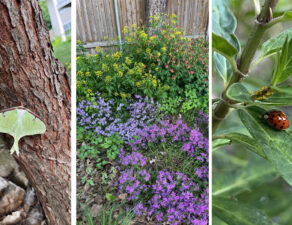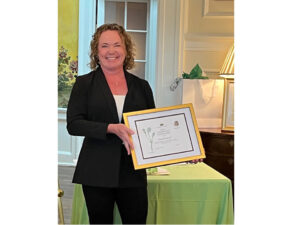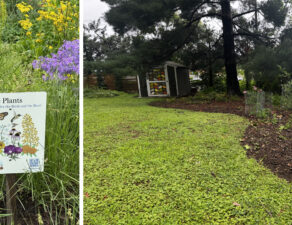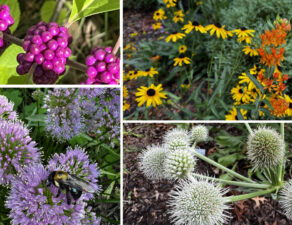
Photos and text by Tom Schroeder.
Purple milkweed, also called heart-leafed milkweed, Asclepias purpurascens, is an excellent, but little used, plant in Kansas City area gardens. In late May and early June, it sprouts many, honey-scented flowers in multiple shades of purple. The flowers produce a nectar that is rich in simple sugars that makes it attractive to a wide range of pollinator insects. It supports a wildlife community in the garden.
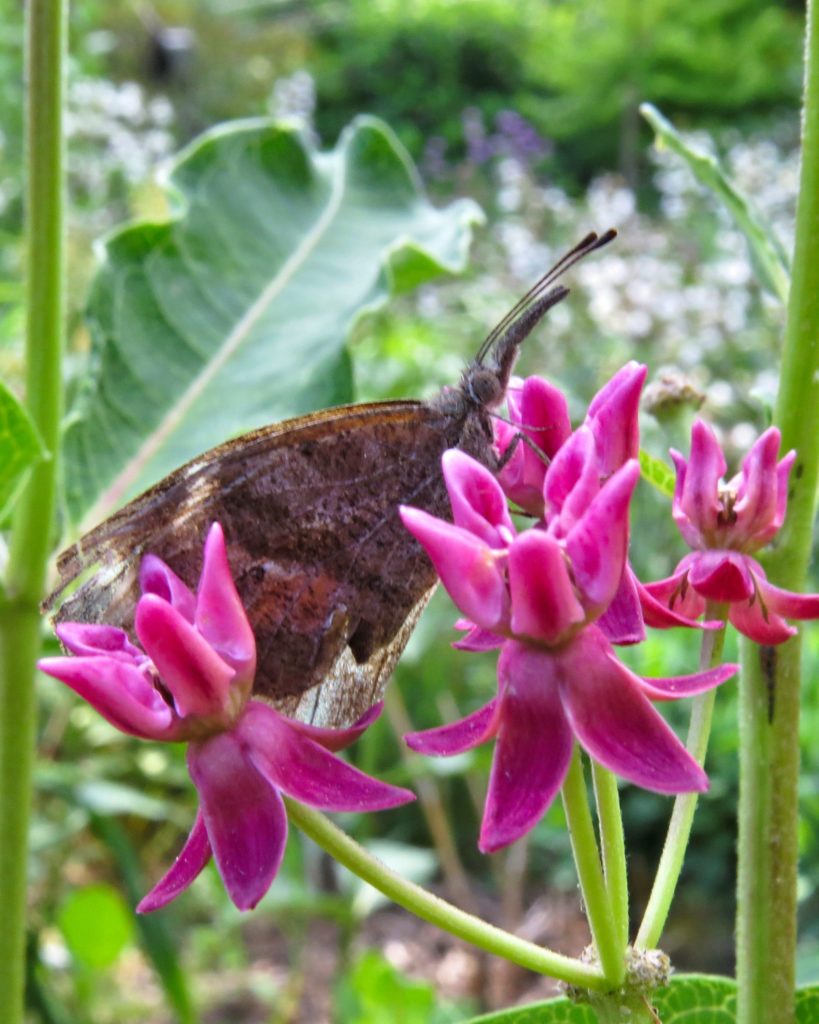
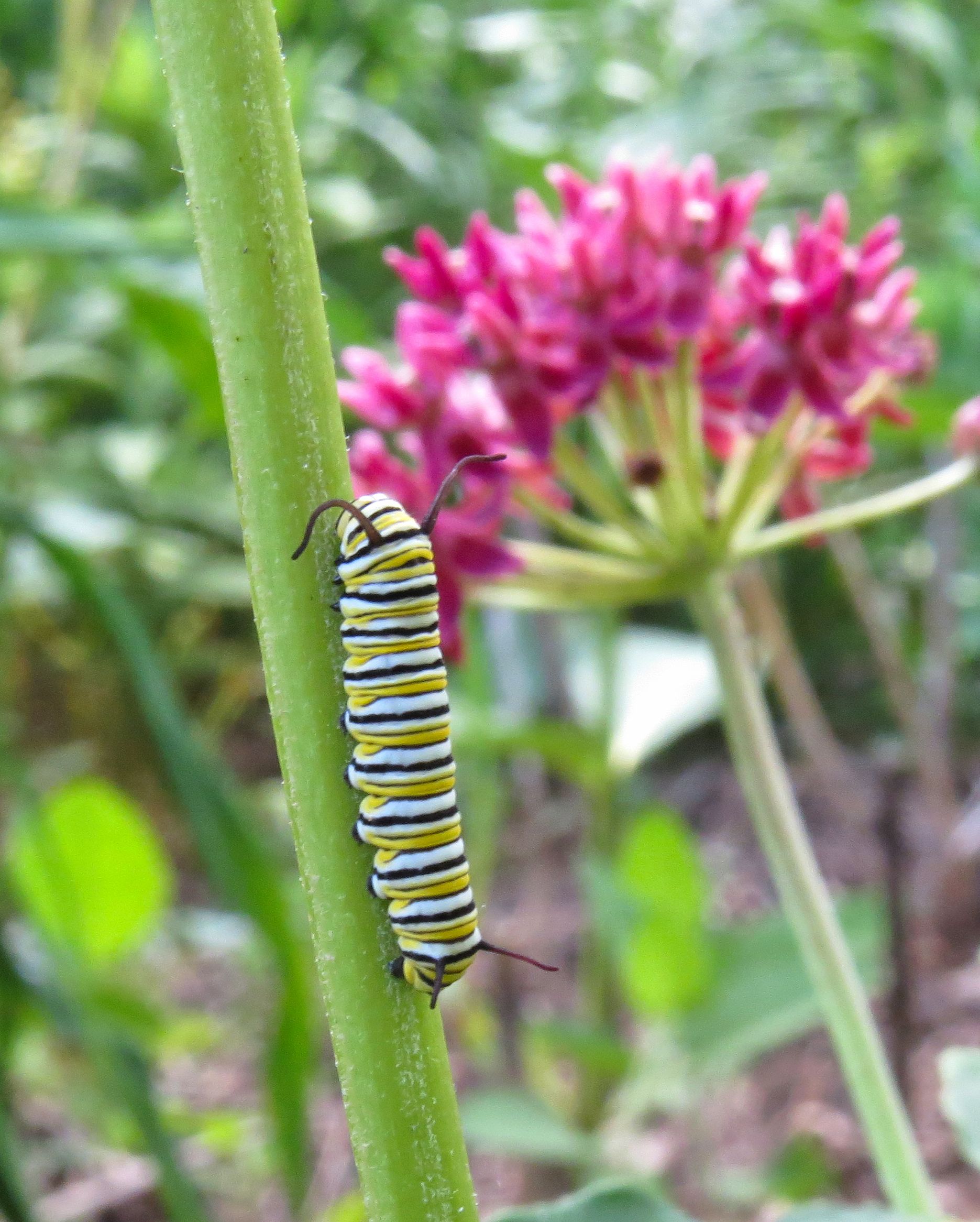
Purple milkweed will grow two to three feet tall and wide. It grows from a stout root so does not aggressively spread like milkweed species that grow from rhizomes. It prefers partial shade, and will do well in a yard with shade from large trees. Rabbits will feed on young plants so it is best to fence off the seedlings until the plant matures.
The leaves are attractive to monarch butterflies for use in rearing their young, making it a good addition to any butterfly garden.
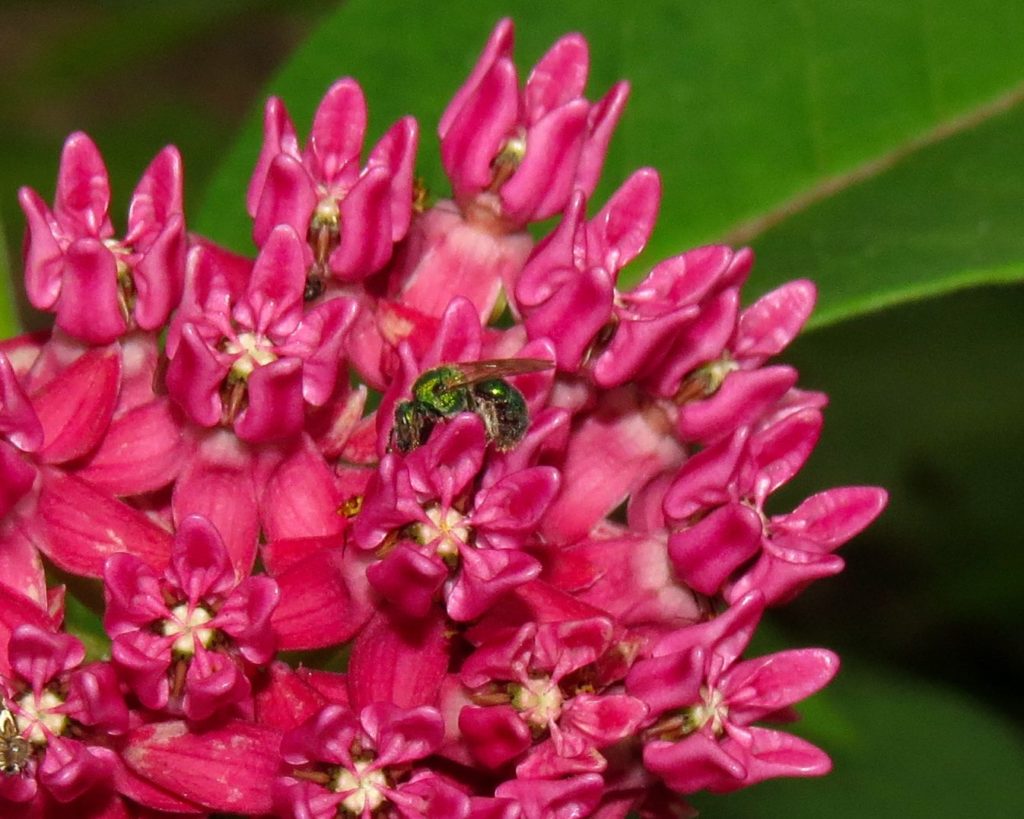
Purple Milkweed will attract a variety of interesting and attractive creatures. The pink Long-Horned Milkweed Beetle has larva that feed on the roots of the plant. It will also support a variety of aphids and the attractive, flower-visiting Syrphid fly will lay its eggs near the aphids so its larva can feed on them. Many different bees and solitary wasps will visit the flowers to feed on the nectar.
It remains attractive in July and August, with seed pods after the flowers are gone. The seed pods remain through the winter after they dry.
What could be better for a backyard garden than a milkweed that will thrive in partial shade, not spread aggressively, support the monarch butterfly population, and attract a community of interesting creatures? Purple milkweed plants may be difficult to find but it is worth the search for these plants at local native plant nurseries.

